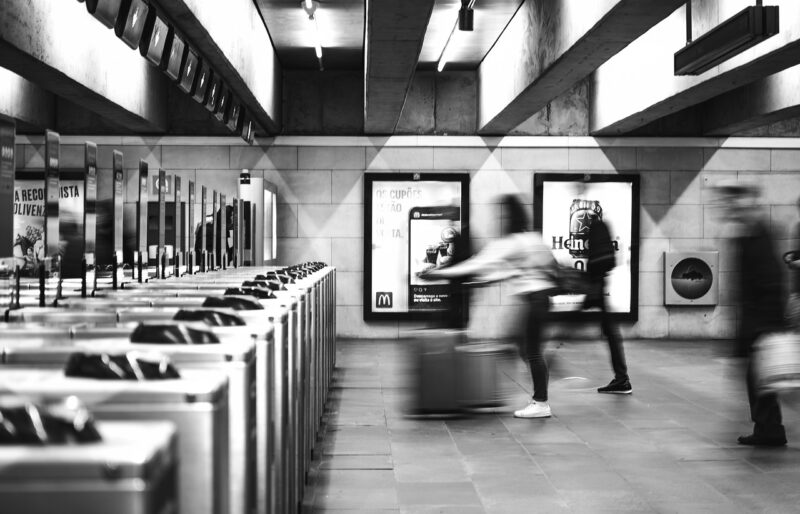The Fascinating History of Subways and How They Became Urban Lifelines
November 11, 2024

Subways are more than just a mode of transportation; they are the veins and arteries of metropolitan areas, allowing millions of people to navigate the hustle and bustle of city life. From their humble beginnings in the 19th century to sophisticated networks that span entire continents, subways have undergone fascinating transformations. Understanding their history not only reveals how they became essential urban lifelines but also offers insights into the modern city’s structure, culture, and economy.
1. The Birth of the Subway: Early Innovations
Subways emerged out of the industrial revolution, driven by the need for efficient urban transport. In the mid-19th century, cities were growing rapidly, and streets were becoming congested with horse-drawn carriages and pedestrians. The first successful underground railway, the London Underground, was inaugurated in 1863, marking a revolutionary step in public transportation.
Initially, the London Underground was powered by steam engines, which required ventilation shafts to expel smoke and fumes. The success of the Underground inspired cities worldwide to explore similar solutions:
- New York City: The first subway line opened in 1904, featuring cutting-edge electric trains, which proved to be cleaner and more reliable than their steam-powered predecessors.
- Paris: The Paris Métro started operating in 1900, and its Art Nouveau stations and efficient design soon made it a model for other cities.
- Berlin: The U-Bahn service began in 1902, with an emphasis on multi-level operations that handled both subway and elevated trains.
These early systems laid the groundwork for expanded networks and integrated transportation technologies.
2. The Growth of Subway Systems: 20th Century Expansion
The early 20th century saw a dramatic expansion of subway systems globally, fueled by economic growth and burgeoning urban populations.
In New York, the subway system expanded rapidly with the construction of several new lines. By the mid-20th century, the complexity of the network was unmatched; it had evolved into one of the largest and most utilized subway systems in the world.
Throughout the 1900s, subway technology also advanced significantly:
- Electric Trains: By the 1920s, subways worldwide had transitioned to electric trains, which offered increased speed and efficiency while reducing pollution.
- Signaling Systems: Advanced signaling technology allowed for more trains to run with fewer accidents. Automation began to emerge, improving operations and safety.
- Design Innovations: Architects and engineers began focusing on the aesthetics of subway stations, resulting in striking designs like the vaulted ceilings of the Paris Métro and the mosaic tiles of the New York subway.
As the demand for faster urban travel grew, cities continued to invest heavily in subway expansion.
3. The Impact of Subways on Urban Life
The advent and expansion of subway systems radically transformed urban life by enabling:
- Increased Accessibility: Subways connected distant neighborhoods with central business districts, allowing easy access to jobs, services, and leisure activities, fundamentally changing the nature of urban living.
- Economic Growth: Cities experienced expansion through the establishment of new commercial zones along subway lines. Businesses thrived in areas once considered too remote.
- Social Integration: Subways facilitated social interaction. They encouraged multiculturalism, allowing residents from various backgrounds to share public spaces during their commutes.
- Environmental Benefits: By reducing reliance on automobiles, subways contributed to lower emissions, making cities more livable.
The subway revolution dramatically altered how people engaged with their city, and its imprint is still felt today.
4. Challenges and Innovations: The Subway in the Modern Era
As cities grew, so too did the challenges faced by subway systems. Aging infrastructure, overcrowding, and the need for modernization became critical issues. In response, many cities invested in upgrades and innovations to maintain their relevance:
- Digital Signage and Real-time Updates: Modern subways have embraced technology, using digital displays that provide real-time train information, improving the overall commuter experience.
- Sustainability Initiatives: Many systems have adopted greener practices by implementing energy-efficient trains, regenerative braking systems, and sustainable station designs.
- Accessibility Improvements: Efforts have been made to ensure subways are accessible to all, including better signage, elevators, and public support services for people with disabilities.
These modern adaptations are essential not only for maintaining efficiency but also for enhancing the commuter experience in an increasingly complex urban landscape.
5. The Future of Subways: Trends and Innovations
The future of subways is bright, with several exciting trends anticipated:
- Smart Transportation: As cities continue to adopt smart technologies, subways will likely integrate more apps that allow commuters to seamlessly navigate their journeys.
- Magnetic Levitation Trains: Some cities are exploring magnetic levitation technology for subways, promising faster and quieter travel.
- Integration with Other Transport Modes: Future subway systems will likely work in tandem with light rail, buses, and rideshare services, creating a comprehensive urban mobility network.
The evolution of subways reflects the changing needs of our urban environment. As cities adapt to population growth and climate change, subways stand poised to remain relevant and vital to urban life.
Conclusion: Subways as Essential Urban Lifelines
Subways have become the lifeblood of urban areas, cutting through the heart of cities to connect people, economies, and cultures. From their origins during the industrial revolution to their innovations in the digital age, subways will continue to play an essential role in shaping urban living. Whether you’re commuting to work, exploring the city, or embracing the local culture, the subway is a reminder of how transportation can transform our world, making cities more accessible and interconnected.
As cities continue to innovate and adapt, subways will undoubtedly evolve into even more critical components of urban infrastructure, reminding us of their fascinating journey and the promise they hold for the future.






